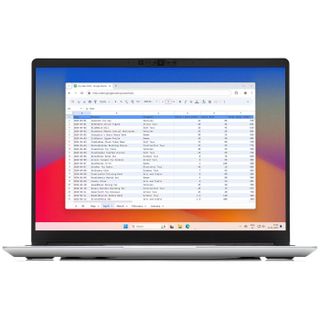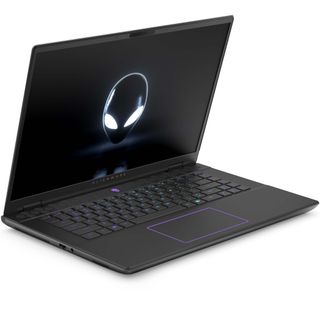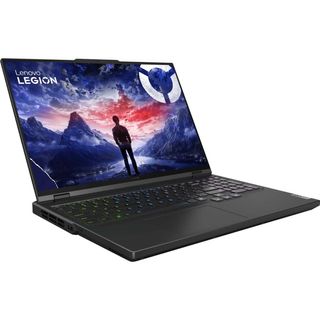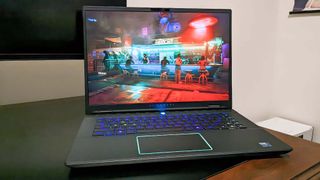Best upgradeable laptop 2024
These laptops all have at least upgradeable memory, storage, and wireless.
Laptops are increasingly prioritizing compact and portable designs, and a casualty of this trend is usually upgradeability. My colleagues and I are not immune to the appeal of thin and light PCs; just look at our favorite Windows laptops out of all we've reviewed and/or personally used. Many of the most popular gaming laptops have too done away with unsoldered RAM, keeping, at best, M.2 slots accessible for SSD and WLAN chip.
That's not what I'm focusing on in this guide. I love to tinker with laptops — there are countless SSD and RAM upgrade articles with my byline on Windows Central — and having a full plate of options in front of me when I remove a bottom panel is always welcome. Every laptop I've included in this list has at least accessible SSD, memory, and WLAN for DIY upgrades.
The Framework Laptop 13 is my top pick because it takes a more generous DIY approach than any other laptop out there. All parts down to the mainboard (with your choice of CPU included) can be swapped out at home, and there's a stocked marketplace for easy sourcing of compatible parts.
There are plenty more great upgradeable laptops available for a variety of users, which I've included here.

I bring to Windows Central more than eight years of experience writing about laptops, PCs, accessories, games, and beyond. If it runs Windows or in some way complements the hardware, there’s a good chance I know about it, have written about it, or am already busy testing it. I love opening up laptops to see what makes them work, and I've written countless guides on upgrading RAM and storage.
The quick list
This quick list of our favorite upgradeable laptops might be enough for you to narrow things down before we get into a deeper dive. Our team has tested and reviewed all picks save the Framework Laptop 13, which has garnered many positive reviews from trusted sites, including our friends at Tom's Hardware.

Best overall
The most upgradeable laptop on the market could be the last laptop you buy. Framework's marketplace provides easy access to all components, including displays, ports mainboard, and CPUs. It's competitively priced and really doesn't look any different from other modern laptops.

Best AI PC
Alienware's m16 R2 is a gaming laptop first, but its Intel Core Ultra CPU with an NPU also lands it within the AI PC range. It's powerful, it's sleek, and it has a ton of ports for your gaming accessories. Memory, storage, and wireless are all upgradeable.

Best gaming
Want to focus on a stellar mid-range gaming experience at a competitive price? Lenovo's Legion Pro 5i (Gen 9) gets the job done with the latest hardware from Intel and NVIDIA in an aesthetically pleasing chassis. Memory, storage, and wireless are upgradeable.

Premium gaming
The Blade 18 for 2024 remains less than an inch thick but boasts up to a Core i9 CPU and NVIDIA RTX 4090 Laptop GPU. Your choice of UHD+ 200Hz display or QHD+ 300Hz mini-LED display is just icing. Upgrade memory, storage, and wireless inside.

Rugged and modular
The Toughbook 55 Mk3 is designed for a select few industries where ruggedness is crucial. It's a laptop for the apocalypse, but it'll also appeal to law enforcement, truckers, miners, and researchers who need a modular design and long battery life.
Our favorite upgradeable laptops in 2024
Why you can trust Windows Central
Let's now get into a deeper dive of the best upgradeable laptops on the market, including specs, pricing, and review highlights.
Best overall

1. Framework Laptop 13
Specifications
Reasons to buy
Reasons to avoid
Framework's Laptop 13 is the only PC on the list that we haven't reviewed at Windows Central, but its reputation is strong enough that I don't mind including it. It also happens to be the most upgradeable laptop you can buy today, and excluding it just wouldn't make sense.
Framework has done an outstanding job of designing a laptop that can be pulled apart completely with just a few laptop tools. Everything from the ports to the display to the mainboard (with a processor included) can be upgraded as you see fit, and Framework's official marketplace makes it easy to find the right parts for the job. No need to shop eBay for sketchy third-party hardware that may or may not work with your laptop model.
The 13-inch Framework Laptop doesn't sit alone. It has a 16-inch counterpart with more screen real estate, a number pad, better cooling, and more powerful configuration options including a discrete Radeon GPU. The 16-inch model is only available with AMD Ryzen 7000 mobile chips, whereas the 13-inch model has Intel Core Ultra or Ryzen 7000 options.
Framework has pre-built models available for sale, but you can also put together your own system and just add an operating system when it arrives. Those looking for true upgradeability should check out the Framework Laptop first, as it has the potential to remain a relevant PC for many years to come.
Best AI PC


Specifications
Reasons to buy
Reasons to avoid
AI PCs are those with a Neural Processing Unit (NPU) capable of handling local AI acceleration. You won't get the same NPU performance, measured in TOPS, as compared to Qualcomm Snapdragon X or AMD Ryzen AI 300, but the Intel Core Ultra CPUs in the Alienware m16 R2 are technically included in the distinction and is what we consider one of the best AI PCs out there.
Alienware's m16 R2 is also our favorite gaming laptop thanks to its super performance, generous port selection, sleek design with RGB lighting, and solid battery life when not gaming. Windows Central Editor Rebecca Spear said in her Alienware m16 R2 review that "its performance and how long the battery can last when running average office programs thoroughly impressed me. For this reason, the laptop will serve you well if you need to use it for work, school, and video games."
It would be nice to have some extra display brightness (Spear tested for about 308 nits), but it otherwise has well-rounded specs. It's an IPS panel with a QHD+ resolution, 240Hz refresh rate, 3ms response time, NVIDIA G-Sync, and 99% sRGB color (as tested).
The laptop has two SODIMM DDR5 RAM slots, two M.2 PCIe 4.0 NVMe SSD slots, and an M.2 WLAN slot, all accessible for upgrades when you remove the bottom panel.
Read our in-depth review: Alienware m16 R2 (2024) review: One of the smoothest gaming laptops I've ever experienced
Best gaming


Specifications
Reasons to buy
Reasons to avoid
I've tested and reviewed many Lenovo laptops, and I always enjoy checking out the refinements in the latest generations. The Legion lineup has undergone some major changes in recent years to arrive at the current setup.
In Rebecca Spear's Legion Pro 5i (Gen 9) review, she says, "The improvements to the design, the latest internals from Intel and NVIDIA, an attractive price point, and a roomy display make this a genuinely great premium mid-range gaming laptop." No, it doesn't have the most powerful hardware, but its price-to-performance ratio is attractive.
Lenovo offers up to a 14th Gen Intel Core i9-14900HX CPU, NVIDIA RTX 4070 Laptop GPU, 32GB of DDR5 RAM, and up to 2TB of M.2 PCIe 4.0 NVMe SSD storage. The PC has two SODIMM RAM slots, two M.2 SSD slots, and an M.2 WLAN slot that are all accessible for DIY upgrades.
As for the display, there are three options available depending on your budget. All measure 16 inches with a 2560x1600 (QHD+) resolution, IPS panel, 16:10 aspect ratio, and anti-glare finish. The top-tier models hit 500 nits brightness with a 240Hz refresh rate, and you can choose between 100% sRGB or DCI-P3 color reproduction. They come with DisplayHDR 400, Dolby Vision, NVIDIA G-SYNC, and Advanced Optimus.
Read our in-depth review: Lenovo Legion Pro 5i (Gen 9) review: A great gaming laptop, but stay close to the charger
Premium gaming


Specifications
Reasons to buy
Reasons to avoid
Razer's Blade laptops are attractive options for those with deep pockets, and the 18-inch Blade 18 pushes the limits of what a laptop can be.
Windows Central Editor Ben Wilson noted in his Razer Blade 18 (2024) review that "it manages to keep the highest-performance CPU and GPU combo chilled with Razer's vapor chamber cooling system and delivers cutting-edge support for Thunderbolt 5, Wi-Fi 7, and 300Hz displays. It's nuts."
Measuring about 18 inches means it still weighs more than six pounds, but it's less than an inch thick. The sleek design won't look out of place anywhere, and the laptop has a ton of high-end features and strong port variety. Even the displays are some of the best around, with Razer offering either UHD+ with a 200Hz refresh rate or a QHD+ mini-LED screen with a 300Hz refresh rate.
The system is powered by a 14th Gen Intel Core i9-14900HX CPU, up to 64GB of DDR5 RAM, up to 4TB of M.2 PCIe 4.0 NVMe SSD storage, and up to a NVIDIA RTX 4090 Laptop GPU. The system has two SODIMM RAM slots, two M.2 SSD slots, and an M.2 WLAN slot accessible for upgrade after removing the bottom panel.
Read our in-depth review: Razer Blade 18 (2024) review: Still the world's most powerful gaming laptop — and your wallet is terrified
Rugged and modular


Specifications
Reasons to buy
Reasons to avoid
Panasonic's Toughbook 55 Mk3 isn't for everyone, but I know there are a select few users out there who perked up when they saw the chunky design. Toughbooks are some of the most durable laptops on the market, and they're made for specialized industries like mining, trucking, law enforcement, scientific research, and basically anything where a regular laptop won't long survive.
The Toughbook 55 Mk3 has a semi-rugged build with a hard exterior shell, boasting IP53 dust and water resistance, a spill-resistant keyboard, and modular bays for easy swapping of hardware. The "xPAKs" for the modular bays can deliver everything from extra ports to fingerprint readers and DVD drives.
The keyboard can be swapped out, you can add 4G LTE connectivity, and you can run two batteries at the same time. In Windows Central Editor-in-Chief Daniel Rubino's Panasonic Toughbook 55 Mk3 review, he was able to get more than 20 hours of runtime with two batteries.
New to the Mk3 models are 13th Gen Intel Core U- and P-series vPro processors, more available RAM, more storage space, Wi-FI 6E, and Bluetooth 5.3. These laptops don't come cheap, but the lasting power can't be understated.
Read our in-depth review: Panasonic Toughbook 55 Mk3 (2024) review: With Intel 13th Gen and faster graphics, there's still nothing better than this semi-rugged laptop
Choosing the best upgradeable laptop for you
Buying a quality Windows laptop is a serious investment, and one way to ensure you get as much life from it as possible is by purchasing one you can upgrade down the line. For starters, manufacturers will always charge more for RAM and storage upgrades than you could spend at a third-party retailer. There's also the fact that your use case may change over time, or you want the freedom for your laptop to grow as you do to prolong its life as much as possible.
While upgrading your laptop parts can be relatively simple, it's still worth noting that you can damage your device if you don't know what you're doing. Make sure you refer to our guide on how to upgrade RAM in a laptop if you're not sure what to do (the process of upgrading storage is generally very similar).
The Framework Laptop 13 is the most upgradeable option available today, and it comes with a great reputation for being reliable and competitively priced. You can buy pre-configured models or build your own from the ground up, and Framework's in-house marketplace ensures you have easy access to compatible upgrade parts as needed.
Being able to swap out everything right down to the mainboard, CPU, and display might be overkill for some, which is why I also added a bunch of laptops with upgradeable RAM, storage, and wireless chips.
Should you buy or build a desktop PC instead?
Laptops are increasingly becoming locked down to the hardware that's installed at the factory, which is a big reason why the Framework Laptop is such a sensation. And while I love taking laptops apart, there's no substitute for the upgradeability in a desktop PC.
A lot of pre-built desktops from major manufacturers are still suffering from proprietary internals, but boutique builders, like Maingear, use only the best hardware that's easy to upgrade down the line. Going one step beyond, if you want to spend the least amount of money and gain the most peace of mind surrounding future upgrades, I recommend building your own PC.
You don't get the mobility afforded by a laptop, which is no doubt a non-starter for plenty of users. But those who feel like they'll only be using their PC at home anyway have the potential to save a lot of money and still get matching or superior performance.
Get the Windows Central Newsletter
All the latest news, reviews, and guides for Windows and Xbox diehards.

Cale Hunt brings to Windows Central more than eight years of experience writing about laptops, PCs, accessories, games, and beyond. If it runs Windows or in some way complements the hardware, there’s a good chance he knows about it, has written about it, or is already busy testing it.